-

-
We are specialists for your holidays in La Palma. With personalized assistance on-site.
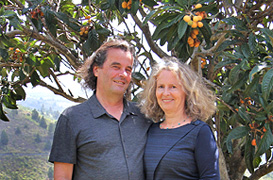
Ulrich & Evelyn Roth -
Our service numbers
Write e-mail+34 822 68 00 89
+49 7442 819 85 90
We're available from Monday to Friday from 10:00 a.m. to 6:00 p.m., and Saturdays from 10:00 a.m. to 1:00 p.m.
-
Accommodations
- with pool 90
- on the seaside 42
- with internet 204
-
Northwest >>
130
- Aguatavar 7
- Arecida 6
- El Castillo 1
- Garafía 4
- Las Tricias 7
- Puntagorda 42
- Tijarafe 22
- Tijarafe Costa 6
- Tijarafe El Jesús 12
- Tijarafe La Punta 21
- Tinizara 2
-
Aridane Valley >>
225
- Celta 7
- Charco Verde 3
- El Paso 23
- Hermosilla 1
- La Bombilla 2
- La Laguna 11
- Las Manchas 24
- Las Norias 11
- Los Llanos de Aridane 25
- Puerto de Naos 45
- San Nicolas 8
- Tacande 2
- Tajuya 9
- Tazacorte Costa 5
- Tazacorte Puerto 14
- Tazacorte Villa 23
- Todoque 12
-
South >>
31
- Fuencaliente 7
- Las Indias 4
- Lomo Oscuro 1
- Los Quemados 6
- Salemera 2
- Tigalate 2
- Villa de Mazo 9
- East >> 16
-
Northeast >>
5
- Barlovento 2
- Los Sauces 2
- Puntallana 1
Candelabra Spurge
„cardón“ - Magnificent Master of Survival
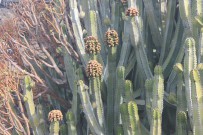
"cardón"
candelabra spurge
Euphorbia canariensis
The Canary endemite with its typical cactus-like look protect itself with a toxic milk-like sap and thorns. It manages to blossom, even in very dry conditions.
Euphorbia canariensis
 The candelabra surge is a Canary endemite, which is mainly found on the central Canary Islands.
The candelabra surge is a Canary endemite, which is mainly found on the central Canary Islands.
The drought tolerant candelabra plant, Euphorbia Canariensis, reminds of a cactus.
It is protected by a white, toxic milky sap inside in the rising candle-like arms, roots and fruits.
Moreover, shoots have short thorns.
"cardonales"
At coastal areas the candelabra surge partially form a dense growth and are called „cardonales“.
On La Palma the protected area between Tenagua and Martín Luis (Puntallana) is known for their presence.
Next to the „cardones“ the volcano hills are overgrown with specimen of euphorbia balsamifera, periploca plant as well as shrubs of the fragrant Canary goarse.
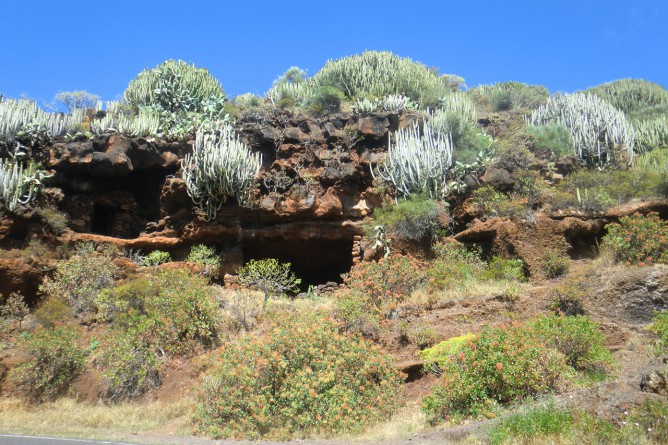
The plant can grow up to 3 meters and, depending on its location, flowers at different times of the year.
Triangular-shaped Fruits
During hot summer months up in the succulent zone (100 - 300m) where even most of the euphorbias shed leaves, the candelabra surge drives out illusory booms.
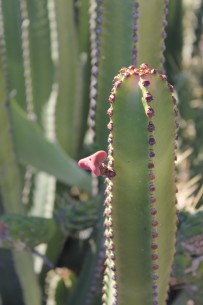


Red triangular-shaped fruits form
The plant is protected and is mainly cultivated in gardens.
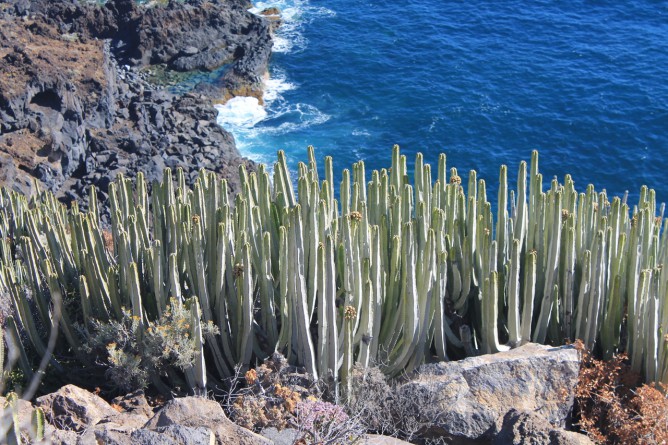
Photos: Ines Dietrich


